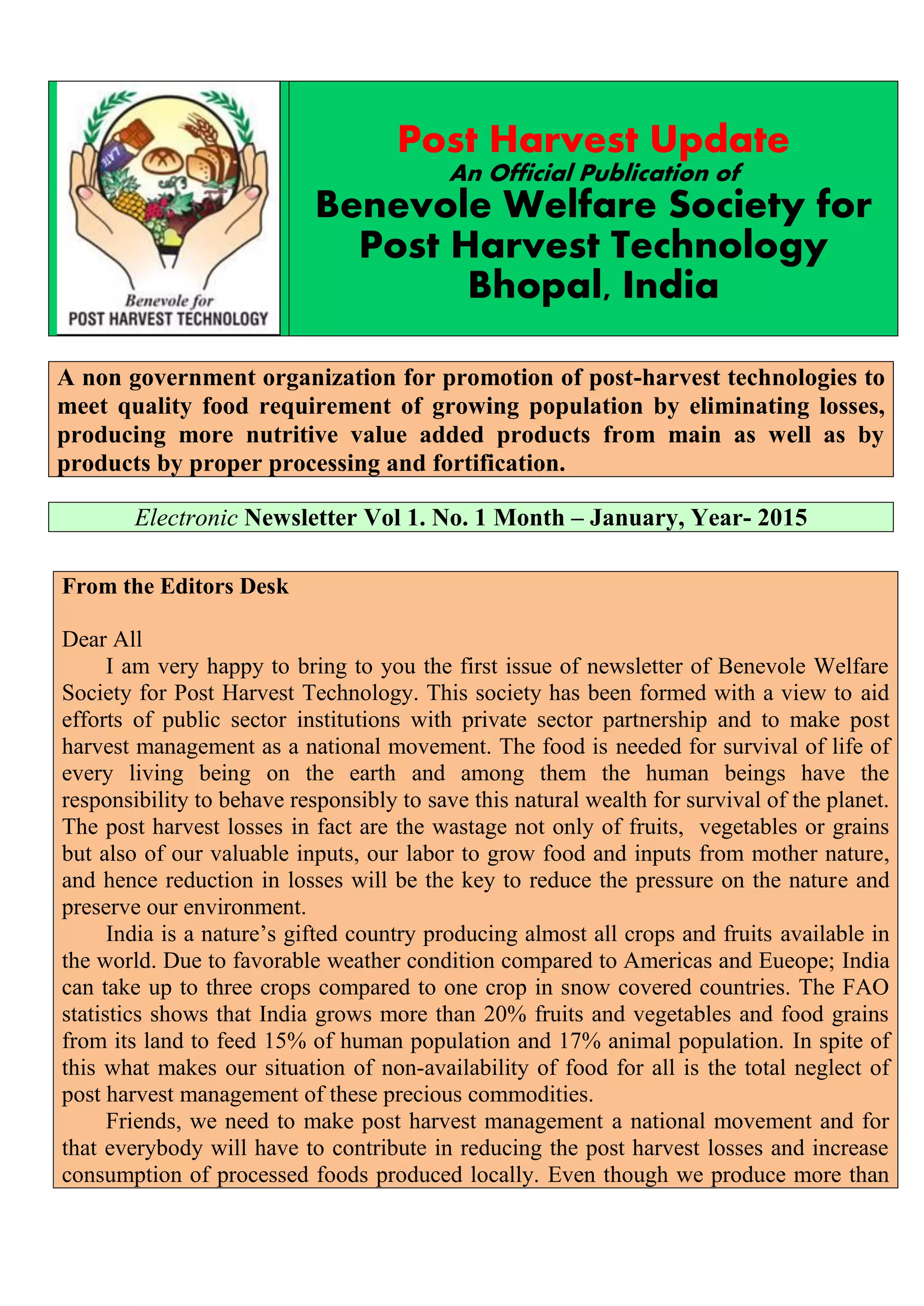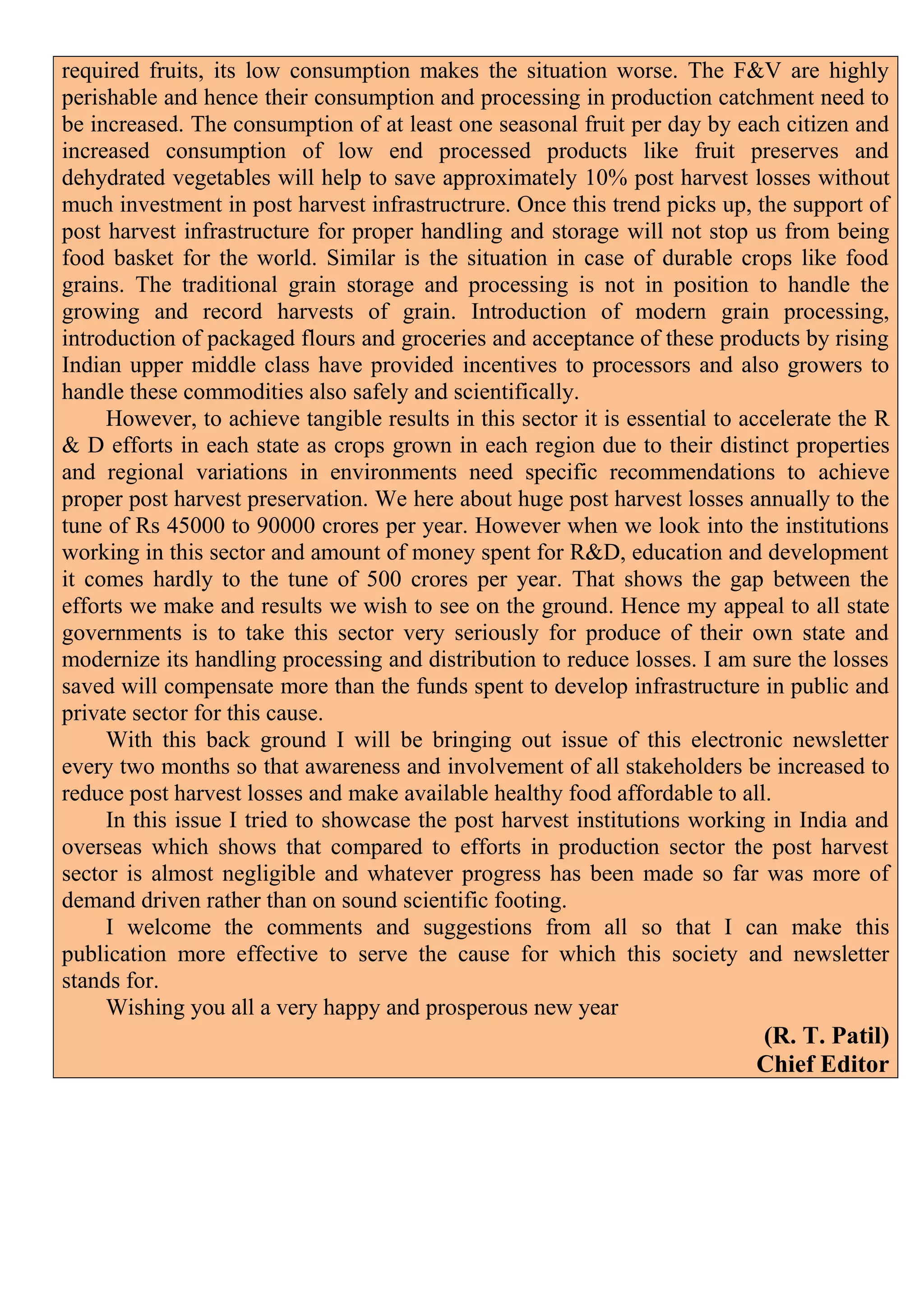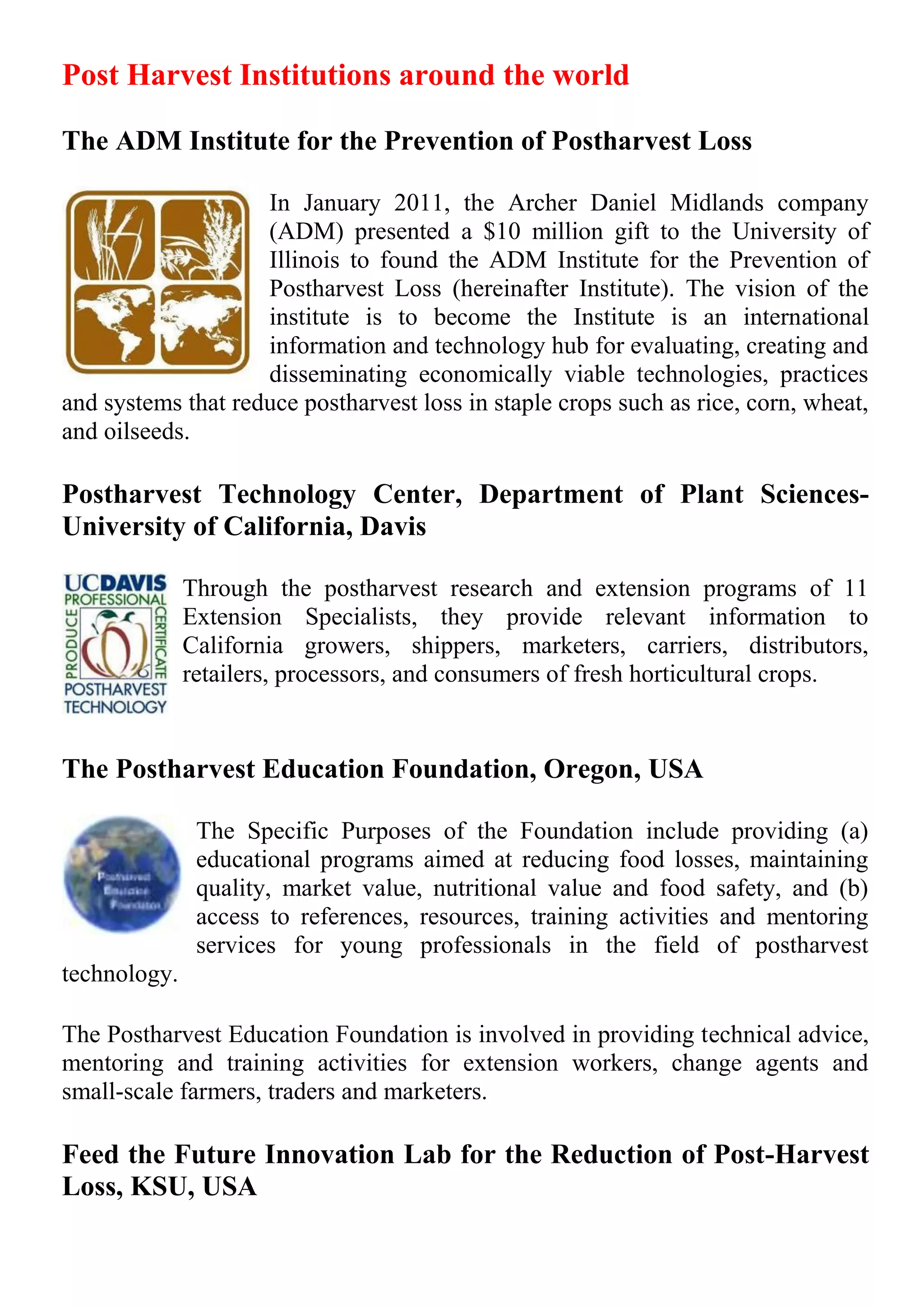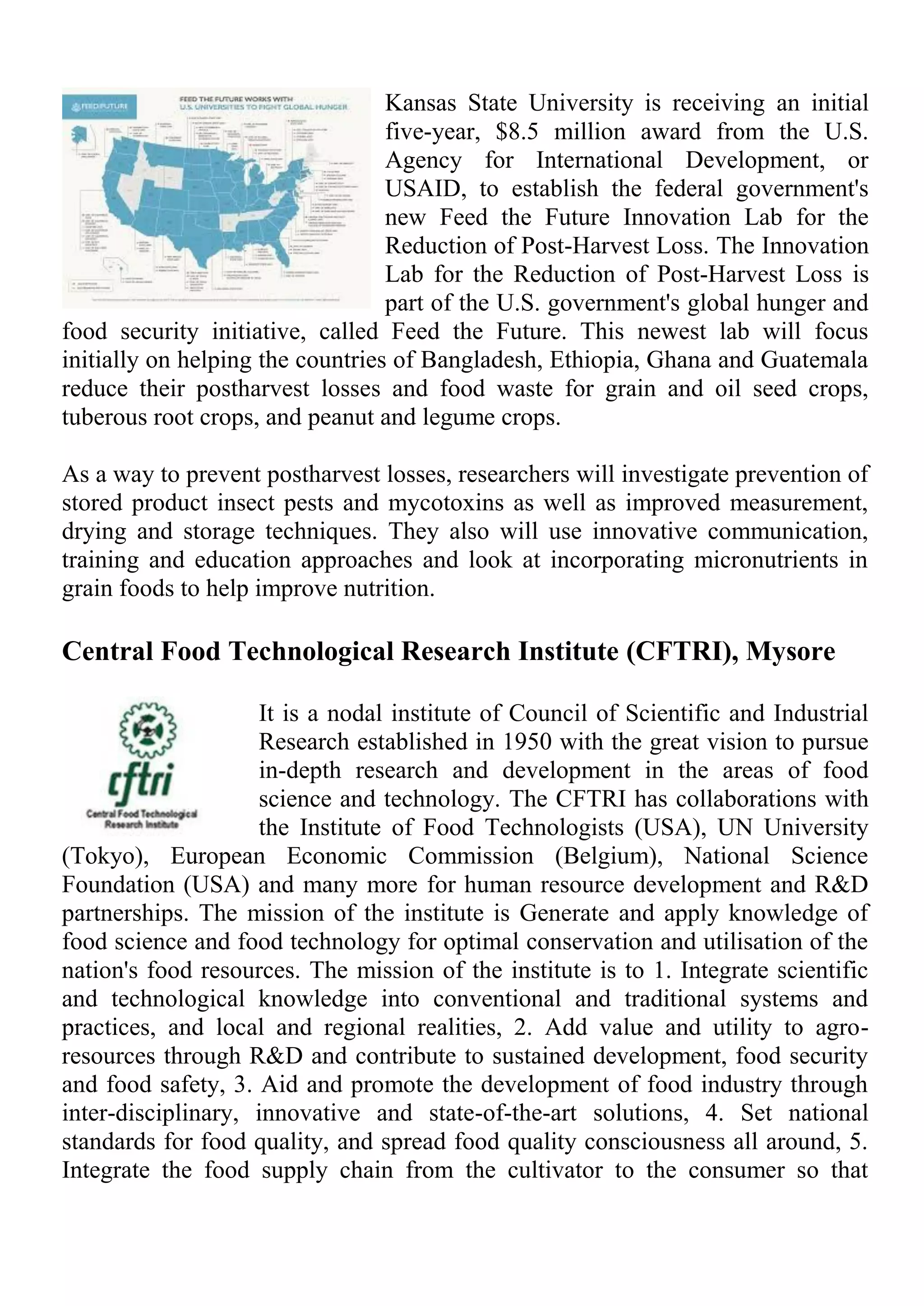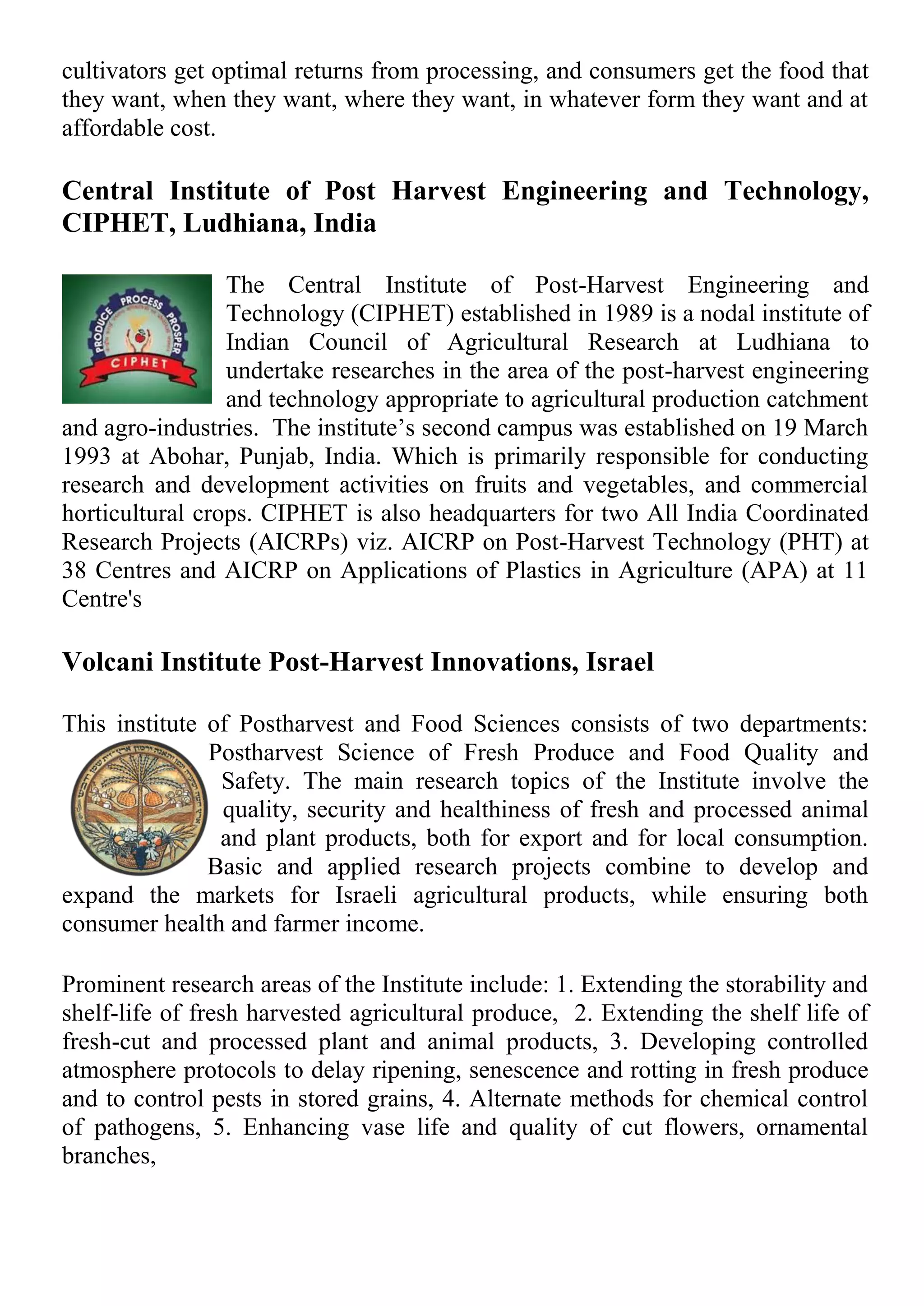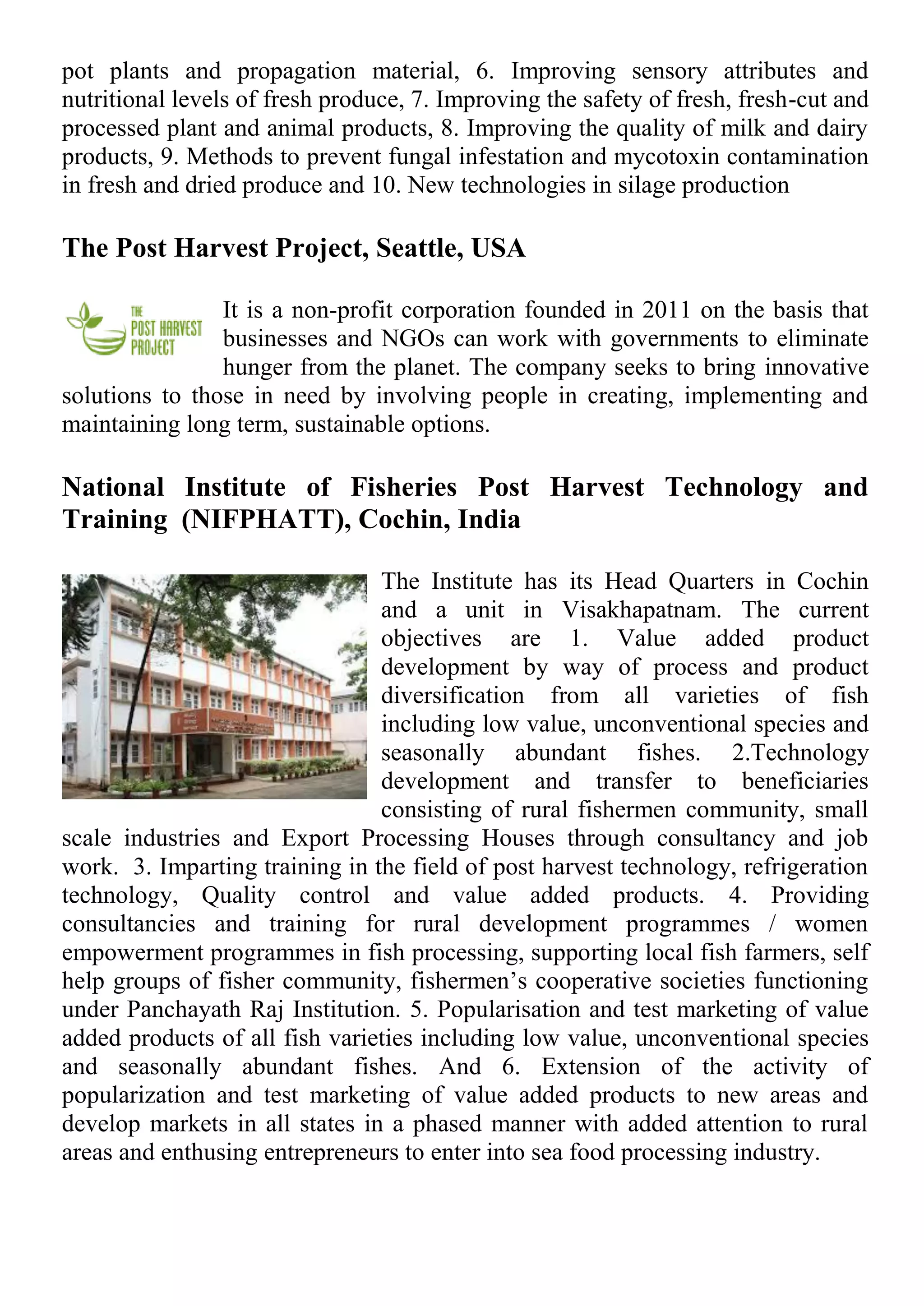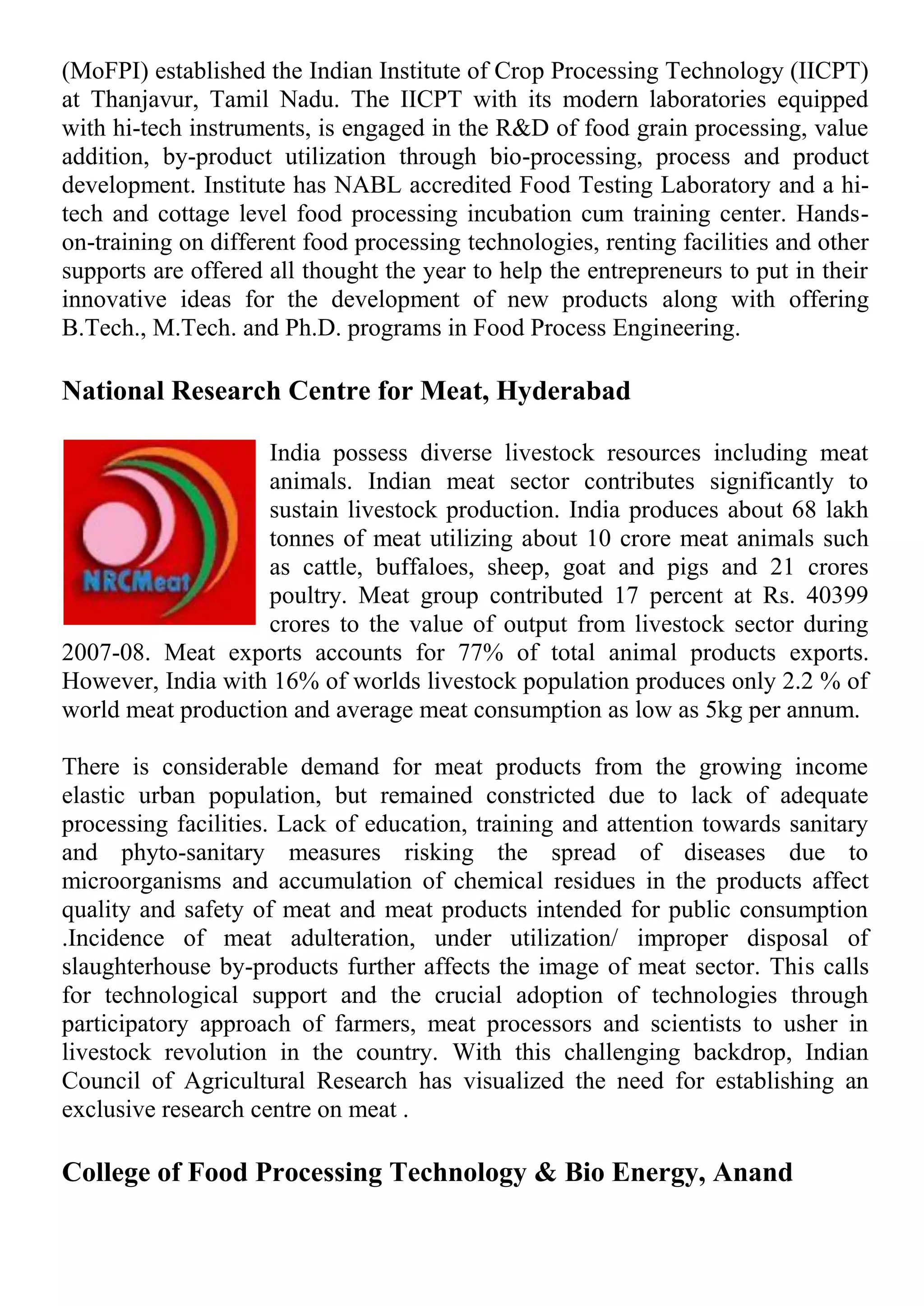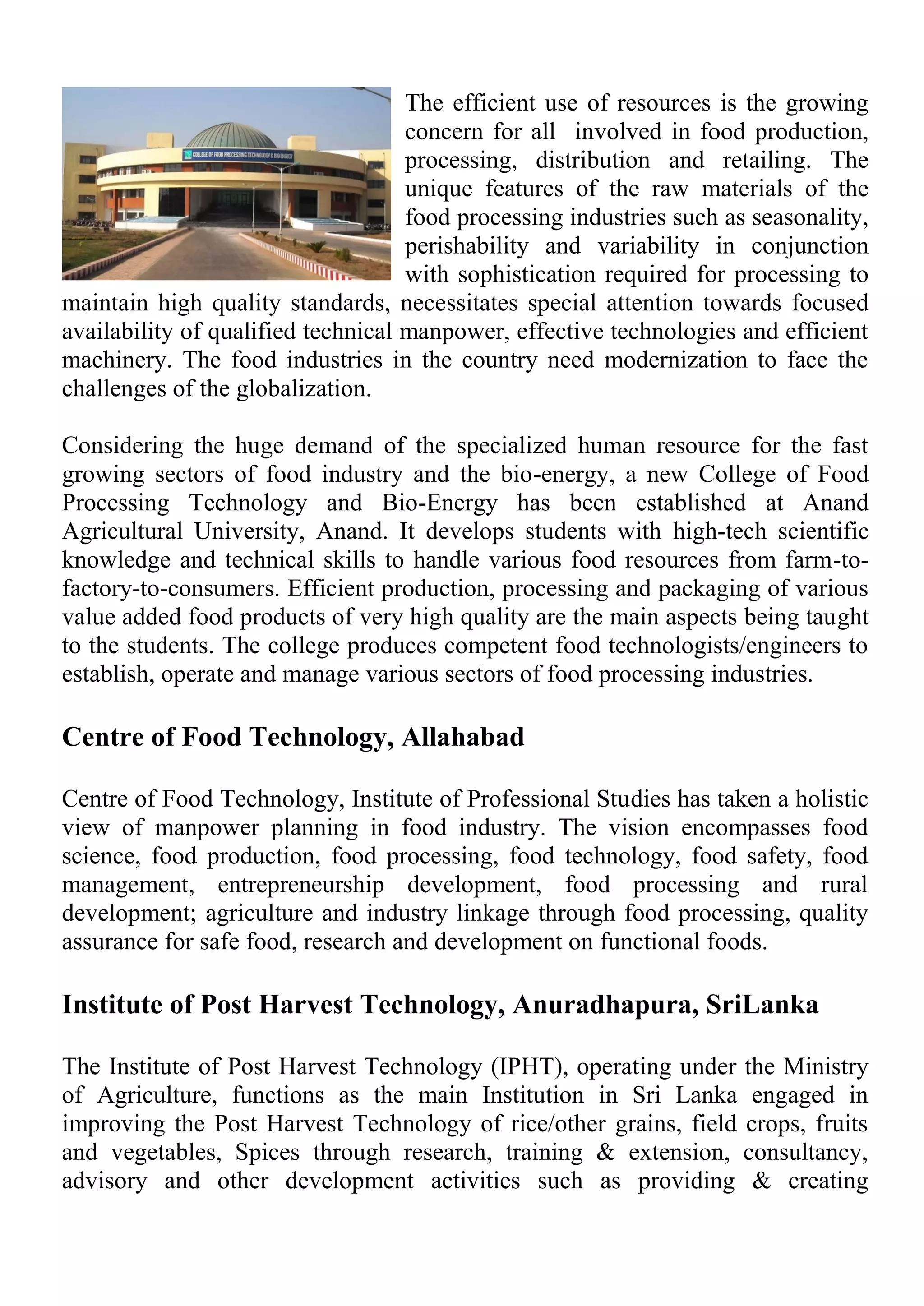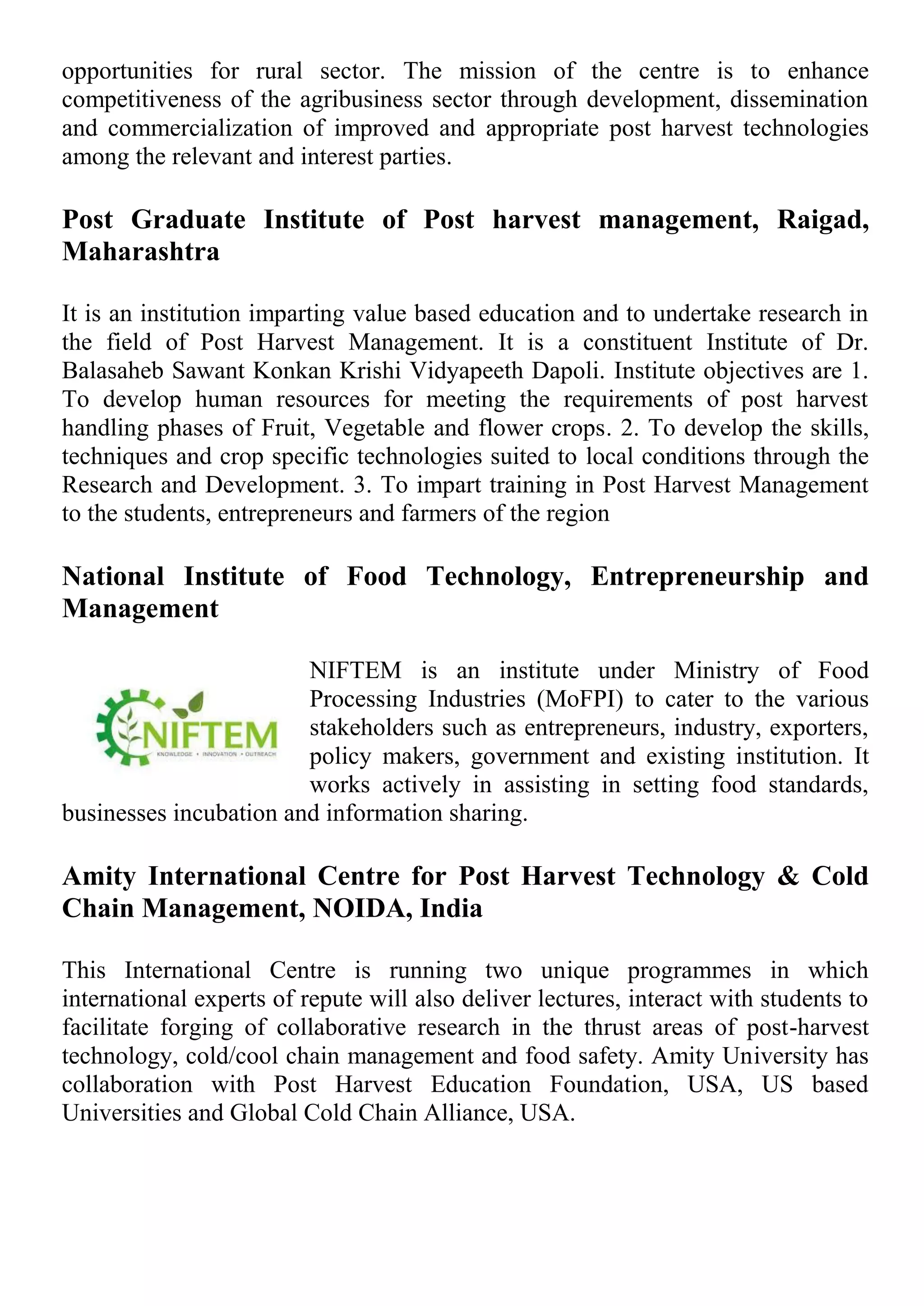This summary provides an overview of post-harvest institutions around the world from the given document:
The document discusses several prominent post-harvest research and education institutions from India, the United States, and Israel. These include the ADM Institute for the Prevention of Postharvest Loss in Illinois, USA which focuses on reducing losses in staple crops. It also mentions the Central Food Technological Research Institute in Mysore, India and the Central Institute of Post Harvest Engineering and Technology in Ludhiana, India as leading Indian institutions. Finally, it briefly discusses the Postharvest Technology Center at UC Davis and the Volcani Institute Post-Harvest Innovations in Israel.
